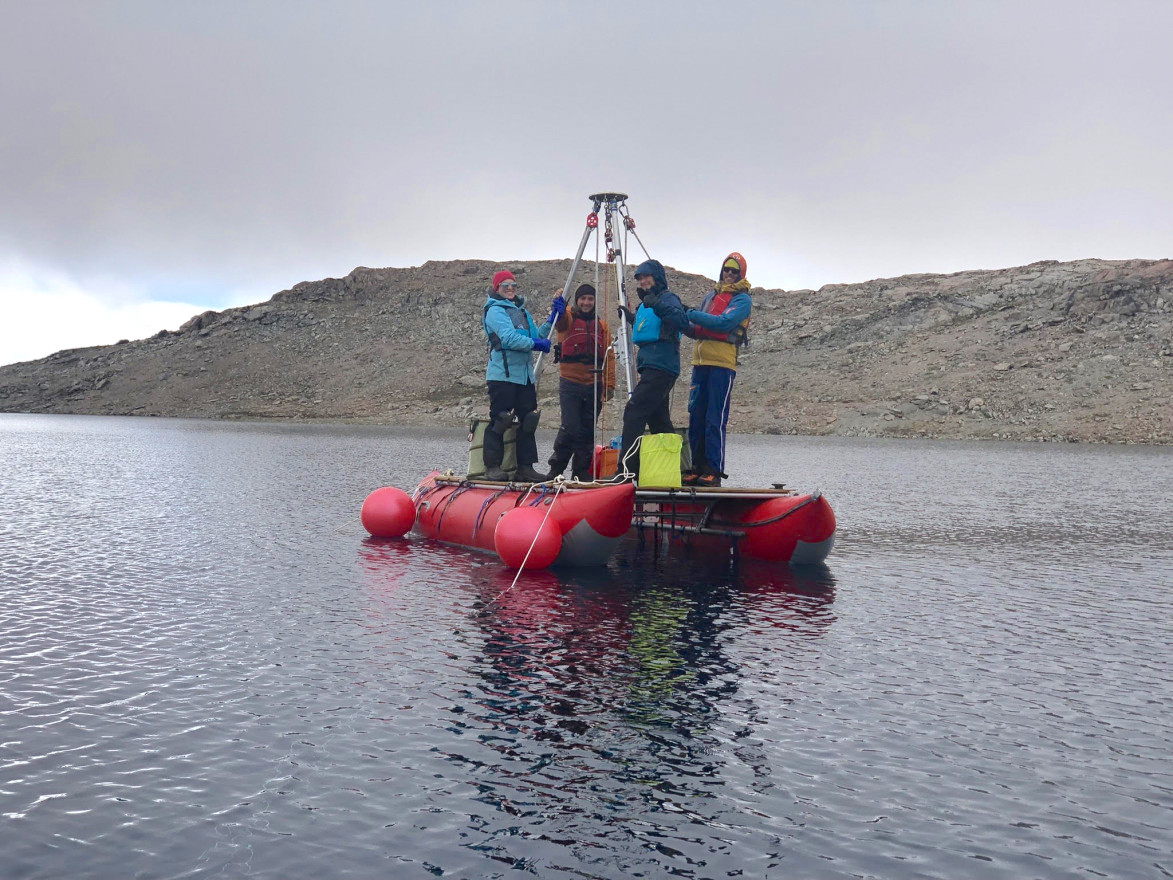
GeoCal researchers excavating sediment cores from the Mel3 lake site. (Courtesy of Peter Puleo/GeoCAL)

GeoCal researchers excavating sediment cores from the Mel3 lake site. (Courtesy of Peter Puleo/GeoCAL)
By Laura Simmons
Tubes of Greenland sediment cores cut lengthwise reveal a time machine with thousands of years of climate clues for the Ph.D. students in Northwestern University’s GeoCAL, the Geoperspective on Climate and Life, laboratory.
The Ph.D. students conducted field research trips to Greenland this past summer to excavate and bring back sediment cores to study the environmental changes in the earth’s history, which can then be compared to climate changes today.

The Ph.D. students at the GeoCal Lab are studying the earth’s climate history using chemical and organic proxies and advanced machinery to analyze past climate in the sediments from lakes. For instance, plant and bug remains hold a snapshot of water chemistry over time and different remains of bacteria associated with predictable climate conditions capture the history of the earth’s climate.
The Ph.D. students do their research about the past to put today’s pace of climate change into perspective. Third-year Ph.D. student Mia Tuccillo studies organic remains preserved in sediments to look at climate change over time.
“I’m really interested in this contemporary situation that we’re in: [an era] of seeing Arctic landscapes change really rapidly with temperature change in terms of their ecological productivity,” said Tuccillo. “So I’m focused on human impacts of the last 400 years.”

Tuccillo said the implications of “Arctic greening” motivates them to continue their work. Arctic greening is the lengthened growing season in the Arctic from earlier snowmelt resulting from climate change. One example, said Tuccillo, of Arctic greening is when plants migrate north and the algae and the photosynthesizing bacteria called cyanobacteria in lakes become more abundant.
Tuccillo said she looks at microscopic organic compounds – pigments like chlorophyll from algae in her research – to study climate history because Greenland sediment cores usually don’t preserve much terrestrial, or land, plant material.
Chlorophyll is the green pigments plants use in photosynthesis, the process powered by sunlight to turn carbon dioxide and water into sugar that plants can then use for food, said Tuccillo. “And so if you find one of these organic compounds in the sediment core, you can infer that there was an organism that was photosynthesizing at that time … there are different pigments that relate to different organisms.”
Tuccillo is currently studying a 0.5 meter sedimentary core from southern Greenland that her peers excavated, including fourth-year Ph.D. student Peter Puleo, second-year Ph.D. student Bailey Nash and second-year Ph.D. student Aidan Burdick.
Puleo, who studies the climate history of Greenland and the upper Midwest, described the excavation of the sediment core, saying they were standing on a custom-built inflatable raft. Puleo said they then use a series of pulleys, ropes and weights to drop the tube that holds the sediment cores into the lake bottom and back up.

“These lakes are really useful for us as tools for reconstructing the climate because the sediment generally piles in over time and forms really neat layers, said Puleo. “And they really easily record environmental changes … the color of the sediment and how much plant materials and sediment, all these different things, help us reconstruct environmental change and climate change.”
The core Puleo displayed covered a climate record of thousands of years.